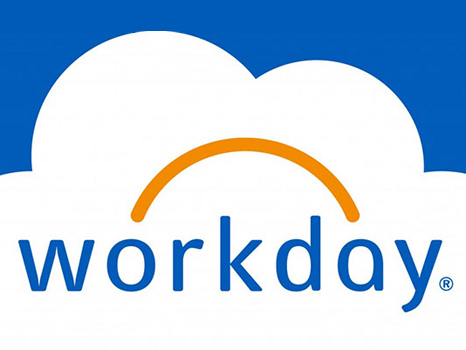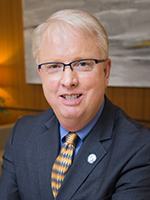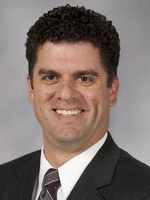Sun-setting Lawson: UMMC to embark on new enterprise

It’s the dawn of a new Workday at the University of Mississippi Medical Center.

Dr. Paul A. Veregge, chief information officer/chief medical information officer, formally announced the Medical Center’s transition to the new enterprise resource planning (ERP) software package during a Workday Project Kickoff meeting for UMMC leaders Feb. 27 in the Classroom Wing.
Veregge said the switch from Lawson, UMMC’s ERP vendor since 2005, and Student Information Systems, which originated at the Medical Center in 2007, to Workday represents “an exciting opportunity for the Medical Center.” Although it will take approximately three and a half years to fully deploy, Workday promises to fundamentally transform the way Medical Center faculty, staff and students interact with the institution’s systems for HR, Payroll, Finance, Supply Chain and Student Information.
The Medical Center’s contract with Lawson expires this year, and although the company has unveiled a new Version 11 upgrade, “it hasn’t been installed anywhere, so no one could tell us how well it performs,” Veregge said. “We didn’t want our academic medical center to implement software that hasn’t been tested before.
“Workday is highly rated by industry-leading technology research companies such as Gartner and KLAS. It’s a complete Enterprise Resource Planning solution. It’s entirely Cloud based, so Workday does all of the maintenance, takes care of all of the hardware and software and provides two version upgrades per year.”
He said “quite a number” of health care institutions use Workday, from the Cleveland Clinic to John Muir Health in California, and such large companies as Walmart, Target and Bank of America have adopted the system.
“We won’t be the first – or the biggest – academic medical center” to convert to Workday, Veregge said.
He said the new system will cost approximately $100,000 more per year than what UMMC is currently paying for Lawson, but Workday will allow the institution to retire a dozen current applications.

According to Al Faulk, UMMC information technology director, Workday implementation won’t be isolated to just a few departments at the Medical Center – all units will be involved at one point or another during the conversion.
“This project will require resources from across the entire campus,” Faulk said. “It will include mobile and remote access, and user dashboards that will deliver key information instantly, both of which represent key ‘wins’ for the organization.”
The Workday implementation process is scheduled to take place in three waves. The first, already underway, will convert all Human Resources and Payroll functions, including Recruiting and Talent Management, by Jan. 1, 2019. Veregge said the Workday conversion will allow Benefits Open Enrollment to become fully electronic by fall 2019.
The second wave, planned to begin around June 2018, will prepare Financials, Grants and Endowments – including Supply Chain – to go live by July 1, 2019. The final wave, to incrementally convert the Student Information System, including Admissions, Registration, Loans and Transcripts, will be implemented by August 2021.
Four workgroups will report to the Workday Steering Committee and will guide the Workday transition: Human Capital Management, chaired by Paula Henderson, chief human resources officer; Finance, chaired by Sam Smith, chief accounting officer-comptroller and interim chief financial officer; Supply Chain, chaired by Bill Stitt, chief of supply chain management; and Education, chaired by Dr. Ralph Didlake, professor of surgery and associate vice chancellor for academic affairs.
“While we’re designing this system these workgroups will be making important decisions as quickly as possible,” Faulk said. “If it sounds like a lot of time and a lot of commitment is needed, it is.”
Representatives from Workday implementation partner Sierra-Cedar of Alpharetta, Georgia, will be on hand to help guide the Medical Center through the conversion process. And although it is largely an intuitive system, Veregge said UMMC faculty, staff and students will have plenty of opportunities to receive training on Workday.
Meanwhile, Lawson will be “sun setting” its product at UMMC, and Faulk said the Division of Information Systems will be treating the system as “lights on” only.
“We won’t spend large chunks of our time developing new things (in Lawson) we won’t be using down the road,” he said. “There will be a small window in time when we will be operating out of two systems (Lawson and Workday), which is part of the process. But once we finally move over to Workday, we will be working on the archiving of our data and moving it to storage for retrieval, if needed.”
For now, Faulk invites Medical Center faculty, staff and students to become acquainted with what will become their everyday institutional electronic resource by visiting Workday Community, a “collaborative space” for all Workday customers across all industries that includes an interactive question-and-answer section. They also may log into “Alma Mater University,” a faux site that users can explore to gain a sense of how Workday will function at UMMC.
“We have a very strict timeline and there’s a lot to accomplish,” Faulk said. “We’ve selected a strong and intuitive product. We have an experienced implementation partner. We now need everyone’s participation to make this a success.”
To get a tip sheet and links to more information about Workday and to access Community and Alma Mater University, visit www.umc.edu/workday.


